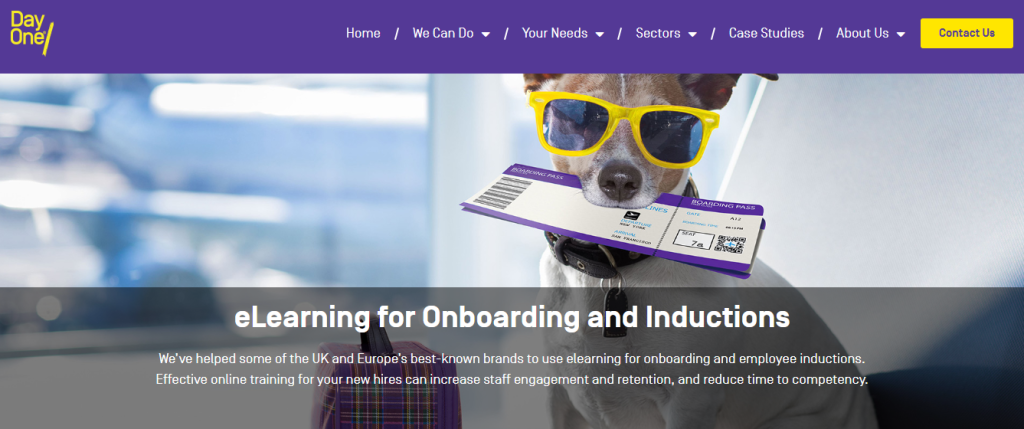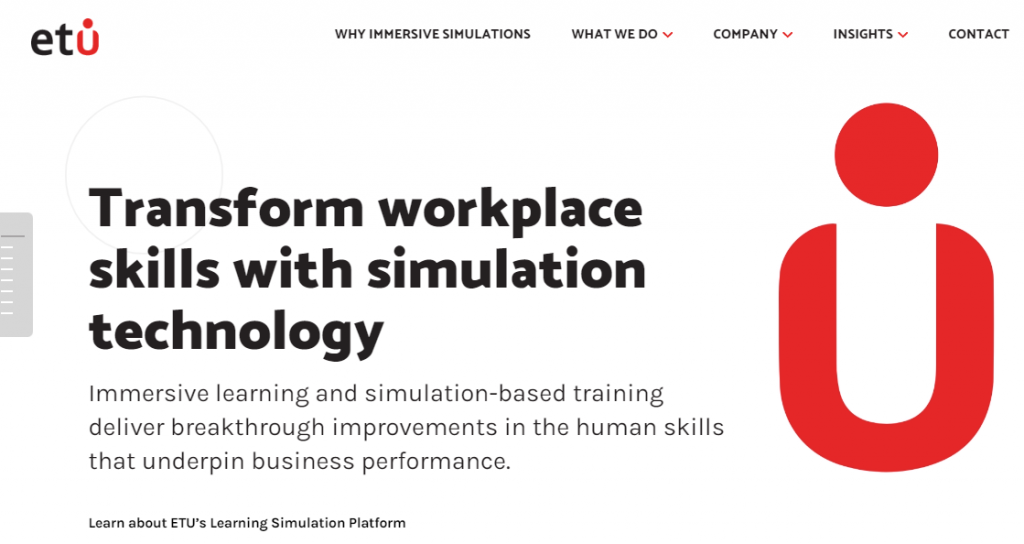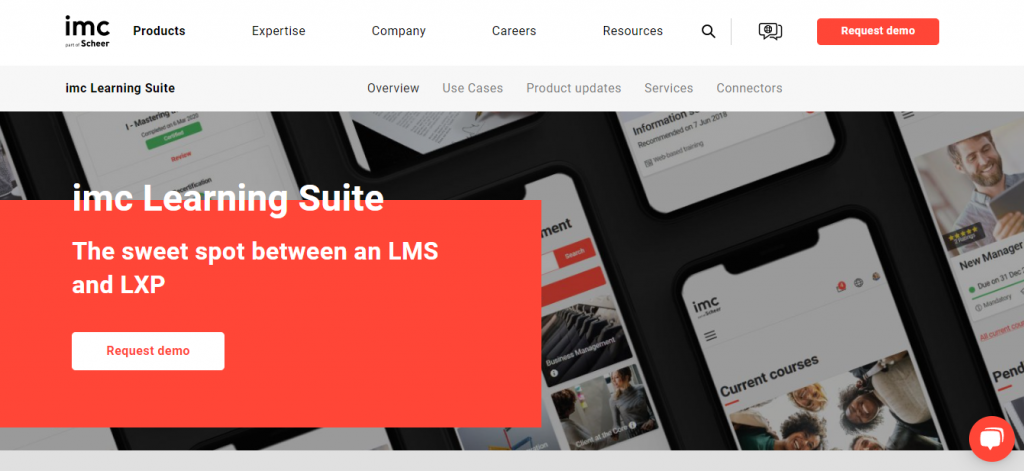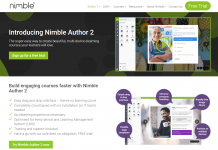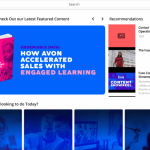Here we offer a guide to induction training for new employees, including a definition, the benefits, and tips on how to make it effective. We also signpost some of the best elearning tools to help make employee onboarding easy, and to analyse the performance of your learning content.
Definition of induction training
Induction training, also known as onboarding or orientation, is the process of introducing new employees to their job, the company, and its culture. The goal of induction training is to provide new employees with the necessary knowledge, skills, and resources to perform their job effectively and become productive members of the team.
The meaning of induction training varies between organisations, as it can include a variety of activities, such as presentations on the company’s history, mission, and values; overviews of the new employee’s role and responsibilities; training on the company’s products, services, and systems; and introductions to colleagues and company policies.
Induction training typically occurs during the first few days or weeks of a new employee’s tenure with a company, and may be conducted in a group or individual setting.
Benefits of induction training for new employees
Induction training is an important aspect of the onboarding process for new employees, as it helps them feel welcomed and supported, and helps them become productive and successful members of the team. Some of the key benefits of induction training for new employees include:
- Familiarisation with the company and its culture: Induction training provides new employees with an understanding of the company’s history, mission, values, and policies, which helps them feel more connected to the organisation and its culture.
- Introduction to colleagues and their roles: Induction training helps new employees get to know their colleagues and understand their roles within the company, which can facilitate better communication and collaboration.
- Essential skills and knowledge: Induction training helps new employees learn the skills and knowledge they need to perform their job effectively. This includes training on the company’s products, services, and systems, as well as health and safety procedures.
- Support and resources: Induction training can provide new employees with ongoing support and resources as they learn and adjust to their new role, which can increase their confidence and reduce their stress.
- Signposting further learning and development opportunities within the company. The 2022 LinkedIn Workplace Learning Report found that companies that excel at internal mobility retain employees for nearly 2X the duration of those that don’t perform as well in this area. This demonstrates the benefit of supporting employee development for the employer, as well as the learner.
Overall, induction training is a crucial step in the onboarding process that can help new employees feel supported and prepared to succeed in their new role.
Components of an effective induction training programme
A modern, effective induction training programme will tend to include the following components:
- Overview of the company and its history
- Introduction to the company’s mission, values, and policies
- Overview of the new employee’s role and responsibilities
- Training on the company’s products, services, and systems
- Health and safety training
- Diversity, Equality & Inclusivity (DEI) awareness
- Onboarding and mentorship from a senior employee
Tips for conducting an effective induction training programme
Below are some quick tips on how to create an effective induction training programme. While these may seem obvious for many, these could still be useful as a checklist for L&D managers.
- Customise the training to the specific needs of the new employee
- Use a variety of training methods, such as lectures, demonstrations, and hands-on exercises
- Encourage new employees to ask questions and participate in discussions
- Provide ongoing support and resources for new employees as they continue to learn and adjust to their new role
How to use eLearning for Induction Training
eLearning, or electronic learning is any learning that is conducted through electronic means. It refers to the use of digital technologies to deliver training content and support learning.
eLearning can be a useful tool for delivering induction training, as it allows employees to access training materials and resources at their own pace and from any location with an internet connection. Here are some steps you can follow to use elearning for induction training:
- First determine the learning objectives and content for the induction training. This will help you decide what elearning resources and activities you need to develop or purchase, rather than starting with the solution and then finding the content to fit within it.
- Choose an elearning platform or software to host the training materials. There are many options available, such as Learning Management Systems (LMS) and online course creation tools.
- Create or gather the elearning resources and activities you will use in the training. These might include videos, interactive quizzes, simulations, and readings.
- Organise the materials into a logical structure and order that makes sense for the learning objectives. You may want to include a mix of self-paced and interactive elements.
- Test the elearning materials to ensure they are functioning properly and are engaging for the learner.
- Deploy the elearning materials to the employees who will be participating in the induction training. You may want to consider providing support or assistance during the training, such as through a discussion forum or live virtual training sessions.
- Evaluate the effectiveness of the elearning induction training by collecting feedback from employees and analysing any data or metrics that are available – often made easy in an LMS through graphical reporting and learning analytics dashboards. Use this information to make improvements to future training programmes.
You can find great examples of induction training with elearning here with case studies from top online learning companies.
Good learning design in line with wider business goals is of course top priority for L&D teams. Content is King still applies after all.
The latest elearning technology can make your life easier though. When used well, tech can help to make training more engaging and immersive. Simulation platforms and an easy to use learning management system can be powerful tools for maximising the effectiveness of your elearning content.
Simulations for Employee Onboarding
Software and process simulations can reduce time to competency and greatly improve training outcomes. Here are some of the best simulation based training solutions on the market for employee onboarding:
Day One Technologies
For over 20 years, Day One have created scenario-based learning and system simulations for induction training and employee development.
UK-based Day One have created elearning for induction training at major UK, European and global brands. Their clients have included the likes of the NHS, TSB, Mercedes Benz and many more.
Alongside a deep understanding of L&D needs based on learning psychology and technical expertise, their simulation training solutions are a key differentiator in the busy elearning market. Global brands like Linde, Lloyds Bank and Roche have benefitted from their innovative approach.
Empower The User (ETU)
US and Ireland based ETU are one of the world’s leaders in immersive learning and simulations.
ETU’s immersive training for employee onboarding has been shown to reduce time to competency by 66%. However, this is speed with no loss of effectiveness – skill acquisition also improves by 14% using their simulations.
No suprise then that many of the world’s best known and most successful companies use ETU simulations for induction training. The likes of Microsoft, Deloitte, IBM and Amazon have benefitted from their onboarding solutions, as well as DEI, corporate leadership and compliance training.
ETU also share their expertise on a guide to immersive learning for corporate training, explaining how and when to use each method.
The Best LMS for Induction Training
There are many Learning Management Systems (LMS) that can be used for induction training, and the ideal one for your organisation will depend on your specific needs and budget. Here are some of the best LMS for induction training that you may want to consider for induction training:
imc Learning Suite
The imc Learning Suite combines the benefits of an LMS with the self-directed personal development tools of a learning experience platform (LXP). It is one of the most comprehensively engineered and configurable elearning solutions we have seen for both online / remote and on the job training.
Check out our imc Learning Suite review or learn more about this powerful, combined LMS and LXP solution on the imc website.
TalentLMS
TalentLMS is a cloud-based LMS that offers a range of features for creating and delivering online courses, including assessments, discussions, and integrations with other tools.
Moodle
Moodle is an open-source LMS that is widely used in education settings. However, it is also among some of the world’s biggest brands as a corporate LMS solution for onboarding and staff development. It offers a range of features for creating and delivering online courses, including interactive elements and integrations with other tools.
Blackboard
Blackboard is a comprehensive LMS that offers a range of features and tools for creating and delivering online courses, including quizzes, assessments, and discussions. The company is one of the biggest elearning companies in the US, but has a global presence.
Canvas
Canvas is an open source LMS from Instructure. It is easy to use and offers a range of features for creating and delivering online courses, including interactive elements, gradebook tracking, and mobile app support.
D2L Brightspace
D2L Brightspace is a feature-rich LMS that offers a range of tools for creating and delivering online courses, including assessments, discussions, and analytics.
LearnUpon
LearnUpon is a comprehensive LMS that offers a range of features for creating and delivering online courses, including assessments, discussions, and integrations with other tools. This is popular as a white label elearning solution as companies can customise the platform throughout to make their learners feel at home. Specialist training companies can also brand it to their own needs.
Docebo
Docebo is a powerful LMS and learning suite that offers a range of features for creating and delivering online courses, including assessments, discussions, and integrations with other tools.
The Docebo LMS is one of the world’s fastest growing and most popular elearning platforms. It’s one of the best solutions when it comes to learning analytics, giving L&D managers the data and insights they need to assess learner performance and improve induction training content.
It is important to carefully evaluate the features and pricing of different LMS options before making a decision, as the right LMS for your organisation will depend on your specific needs and budget.
As well as the feature set, you might want to consider a learning management system that is proven in your industry.
In conclusion
Good induction training for new employees is an essential part of the learning and development process. An effective induction training programme can help new employees feel welcomed and supported, and help them become productive and successful members of the team.



